Explore This
What is a Supernova?
What is a Supernova? (Spanish)
Learn About Supernovas & Supernova Remnants
This is an advanced resource with a lot of content. Some content may need to be downloaded to view.
Supernovas & Supernova Remnants Image Gallery
If the previous resource is too advanced, explore this image gallery of supernovas and supernova remnants.
ViewSpace - Crab Nebula
ViewSpace is a great resource to understand the different types of light used when studying astronomical objects. When using this site, begin with this page to help understand how the website works.
Watch This
Think Tank: When Stars Go Boom
Runtime: 3 Minutes
What is a Supernova? (Spanish)
Runtime: 1 Minute 30 Seconds
X-ray Vision Reveals the Insides of Stars
Runtime: 2 Minutes 30 Seconds
Do This
Journey Through An Exploded Star
Start by exploring the "Interact" and "Narrated Tour" sections with your educator. Then, freely explore the resource.
Space Forensics
Stars exploding? Who would do such a thing? Join Detective Eagle Quark on his investigation of this mystery in this Space Forensics interactive game.
This game takes 1 to 2 hours to play through.
Life Cycle of Massive Stars
Get up and move to do this activity!
Take Your Own MicroObservatory Image
Control Telescope
Crab Nebula is a supernova remnant, but it is not always available to take images of throughout the year. If this is your desired target, and it is not available, try finding an image in the archive to process.
Process Your Own MicroObservatory Image
Process Image
Download Images For Your Exhibit
Crab Nebula:
A Crab Walks Through Time
Multiwavelength Crab Image
Cassiopeia A:
Chandra Reveals the Elementary Nature of Cassiopeia A
Choose Your Template
Use these templates, which are PowerPoint files, to create your exhibit. Follow the specified guidelines for text and picture boxes.
Be sure to include proper credits for your images. You may include a logo of your program, school, or organization if desired.
Download A Template:
Blue Template
Indigo Template
Red Template
Design Exhibit
- Write poster title
- Insert images
- Write image labels and text boxes
- Write credits and insert logo
- Save work
Present Your Work






